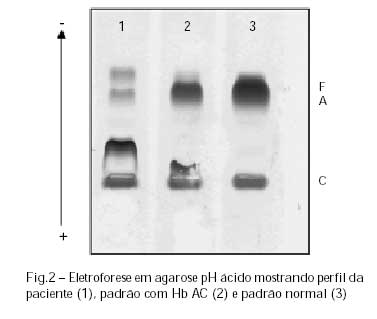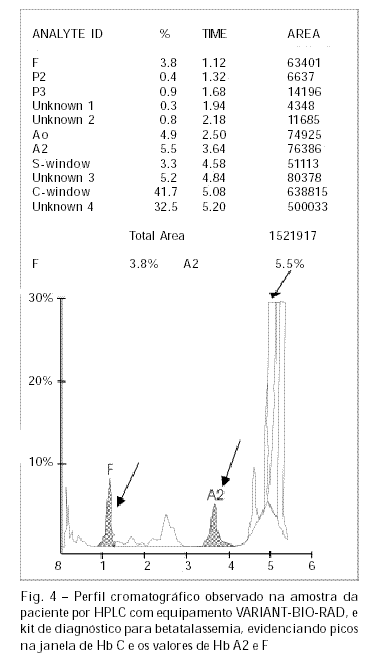Thalassemias are a heterogeneous group of inherited disorders characterized by a microcytic hypochromic anemia and an imbalance in the synthesis of the globin-chains. Hb C is the second most frequently variant of hemoglobin found in Brazil. The laboratory diagnosis of hemoglobinopathies, including thalassemias, is growing in importance, particularly because of an increasing requirement for neonatal diagnosis of abnormal hemoglobins. Screening tests were carried out using alkaline and acid electrophoresis, globin-chain analysis by cellulose acetate in alkaline pH, isoelectric focusing and HPLC. The molecular characterization was made by PCR-ASO for Hb C and beta thalassemia mutants. Large-scale screening and discriminative methodologies must provide information about the hemoglobin polymorphisms in Brazilian population. HPLC is a powerful tool in these cases. Molecular characterization is important to genetic counseling and clinical management, in particular for the Brazilian population that have an intense racial admixture, with great variability of hemoglobins. In this paper an association between Hb C and beta thalassemia (IVS-II-654) in a black family from Brazil was described.




